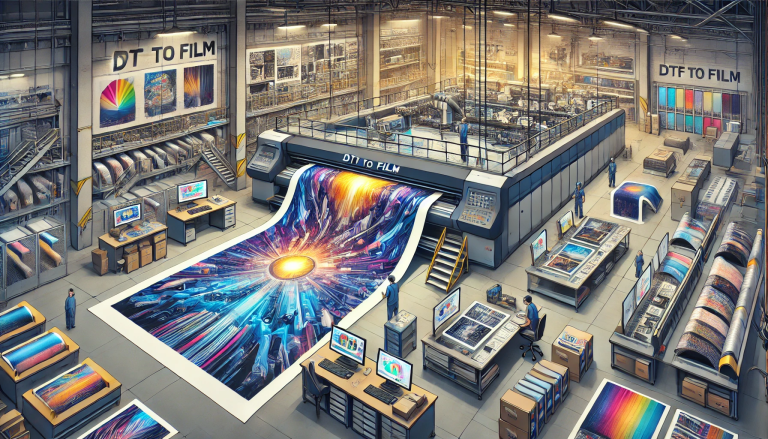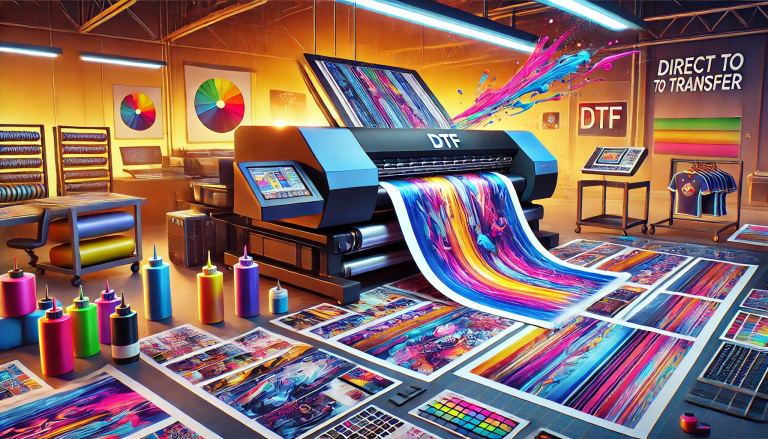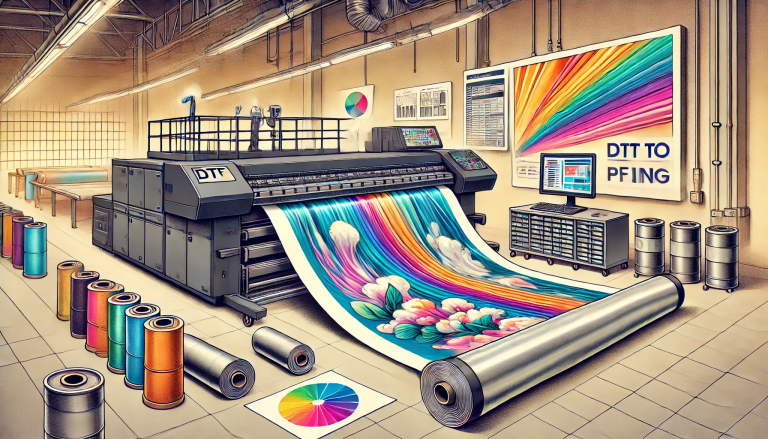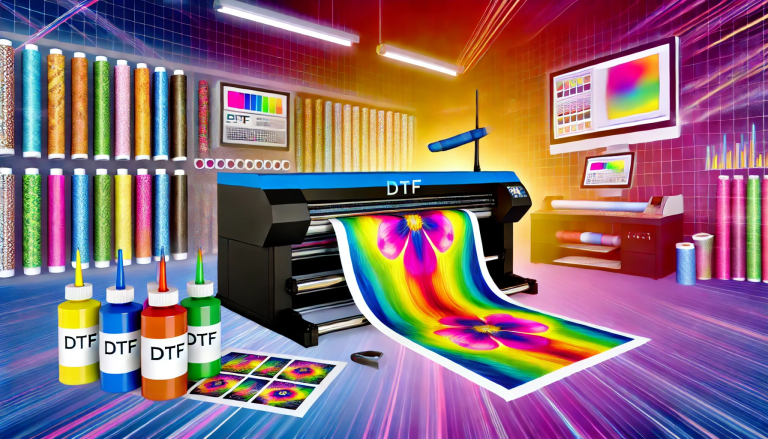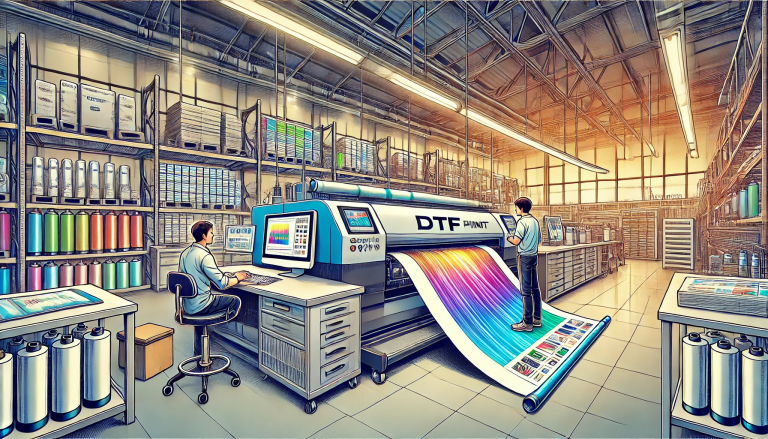“Mastering the Art of Making DTF Transfers: Understanding the Technology, Process, Challenges, and Future Innovations” -MAXDTF- DTF Film 13 Manufacturer, PET Film For DTF Factory, Made in China
In the dynamic landscape of textile printing, Direct-to-Film (DTF) transfer technology has emerged as a transformative force, redefining how designs are applied to fabrics. Unlike traditional methods such as screen printing or Direct-to-Garment (DTG) printing, DTF offers a unique blend of versatility, cost-effectiveness, and ease of use, making it a preferred choice for small businesses, independent designers, and large-scale manufacturers alike. This article delves into the intricacies of DTF transfers, exploring its underlying technology, step-by-step process, inherent challenges, and the innovative trends shaping its future.
1. The Fundamentals of DTF Transfer Technology: What Sets It Apart?
At its core, DTF transfer technology involves printing a design onto a special PET (polyethylene terephthalate) film using water-based, pigmented inks, followed by applying a layer of hot-melt adhesive powder. The printed film is then heat-pressed onto a variety of fabric substrates, transferring the design and adhesive onto the material. This process eliminates the need for pre-treatment of fabrics— a critical limitation of DTG printing— and supports a wide range of materials, including cotton, polyester, blends, denim, and even non-textile items like leather and canvas.
What distinguishes DTF from other printing methods is its adaptability. Unlike screen printing, which requires custom stencils for each color and is cost-prohibitive for small batches, DTF allows for on-demand printing of full-color, high-resolution designs with minimal setup time. Additionally, DTF outperforms DTG in terms of color vibrancy on dark fabrics, as the adhesive layer acts as a base that enhances ink opacity. The technology also offers excellent wash durability, with designs retaining their quality even after multiple washes, making it suitable for apparel, home textiles, and promotional products.
2. The Step-by-Step DTF Transfer Process: From Design to Final Product
Mastering DTF transfers requires a systematic approach, with each step playing a crucial role in ensuring the quality and longevity of the final print. Below is a detailed breakdown of the core process:
2.1 Design Preparation and RIP Software Setup
The process begins with designing or selecting a digital image, typically in high-resolution formats like PNG or PSD to preserve detail. The image is then processed using Raster Image Processor (RIP) software— a specialized tool that converts the digital design into a format compatible with DTF printers. RIP software also allows for adjustments to color accuracy, ink density, and print speed, ensuring the design translates perfectly onto the film.
2.2 Printing the Design onto PET Film
Once the design is prepared, the DTF printer applies water-based pigmented inks onto the PET film. Unlike solvent-based inks, water-based inks are eco-friendly and produce vibrant, long-lasting colors. The printer’s precision ensures that even intricate details, such as fine lines or gradients, are reproduced accurately. During this step, it is critical to maintain consistent ink flow and film tension to avoid smudges or misalignments.
2.3 Applying Hot-Melt Adhesive Powder
Immediately after printing, the wet ink on the PET film passes through a powder shaker, which evenly distributes hot-melt adhesive powder over the design. The adhesive powder adheres only to the inked areas, thanks to the tackiness of the wet ink— a feature that minimizes waste. Excess powder is collected and reused, making the process cost-efficient.
2.4 Curing the Ink and Adhesive
The film then moves through a curing oven, where heat (typically between 100°C and 120°C) dries the ink and melts the adhesive powder, fusing it with the ink layer. Curing time varies depending on the design size and ink density, but it generally takes 1–2 minutes. Proper curing is essential to ensure the design bonds securely to the fabric during heat pressing.
2.5 Heat Pressing onto the Substrate
The final step involves placing the cured PET film (design side down) onto the target fabric and applying heat and pressure using a heat press. The heat (160°C–180°C) activates the adhesive, transferring the design from the film to the fabric. Pressure (around 40–60 psi) ensures full contact between the adhesive and the fabric, while the pressing time (10–15 seconds) varies based on the fabric type. After pressing, the PET film is peeled away, leaving a crisp, durable design on the substrate.
3. Navigating the Challenges of DTF Transfers
While DTF technology offers numerous advantages, it is not without its challenges. Understanding and addressing these hurdles is key to mastering the art of DTF transfers:
3.1 Adhesive-Related Issues
One of the most common challenges is improper adhesive application. Too little adhesive can result in poor wash durability, while too much can create a stiff, uncomfortable texture on the fabric. Additionally, uneven powder distribution can lead to patchy transfers or areas where the design peels off. To mitigate this, operators must calibrate the powder shaker correctly and ensure the ink is sufficiently wet to adhere to the powder.
3.2 Color Consistency and Bleeding
Maintaining color consistency across batches can be difficult, especially when using different ink brands or replacing ink cartridges. Ink bleeding— where colors run into each other— is another issue, often caused by excessive ink density or insufficient curing. Using high-quality inks, calibrating the RIP software regularly, and adhering to curing parameters can help resolve these problems.
3.3 Substrate Compatibility
While DTF works with most fabrics, some delicate materials (such as silk or lace) may be damaged by the heat and pressure of the heat press. Additionally, fabrics with high stretch (like spandex) may require specialized adhesives to prevent the design from cracking when the fabric is stretched. Testing the transfer on a sample of the substrate before full production is essential to avoid costly mistakes.
3.4 Equipment and Maintenance Costs
Initial investment in DTF equipment— including printers, powder shakers, curing ovens, and heat presses— can be high, particularly for industrial-grade machines. Regular maintenance, such as cleaning printer nozzles to prevent clogging and replacing worn parts, adds to the operational costs. Small businesses may need to balance equipment quality with budget constraints, often opting for mid-range machines that offer reliability without excessive expense.
4. Future Innovations: Where DTF Transfer Technology Is Heading
As the demand for customizable, high-quality textile printing grows, DTF technology is evolving to address its limitations and expand its capabilities. Below are the key innovations shaping the future of DTF transfers:
4.1 Eco-Friendly Materials and Inks
Sustainability is a driving force in the printing industry, and DTF is no exception. Manufacturers are developing biodegradable PET films and water-based inks with lower VOC (volatile organic compound) emissions to reduce the technology’s environmental footprint. Additionally, recycled adhesive powders are being tested to minimize waste, making DTF a more eco-conscious choice for businesses.
4.2 Automation and Smart Technology
Automation is streamlining the DTF process, with new machines featuring integrated systems that handle printing, powder application, curing, and even heat pressing in a single workflow. Smart technology, such as sensors that detect ink levels and powder distribution, allows for real-time adjustments, reducing human error and improving consistency. Some advanced systems also connect to cloud-based platforms, enabling remote monitoring and design management.
4.3 Enhanced Adhesive Formulations
Future adhesive powders will offer improved flexibility and durability, making DTF suitable for even more substrates, including high-stretch athletic wear and outdoor textiles. Researchers are also developing adhesives that are resistant to UV radiation and harsh chemicals, expanding the applications of DTF to products like outdoor banners and workwear.
4.4 High-Speed and Large-Format Printing
To meet the demands of large-scale production, DTF printers are becoming faster and capable of handling larger film sizes. Industrial-grade machines now offer print speeds of up to 100 square meters per hour, making DTF a viable alternative to screen printing for high-volume orders. Large-format DTF printing is also gaining traction, enabling the creation of custom designs for oversized items like blankets and curtains.
5. Conclusion: Mastering DTF as a Versatile Printing Solution
DTF transfer technology has revolutionized the textile printing industry, offering a perfect balance of versatility, quality, and cost-effectiveness. By understanding its core principles, mastering the step-by-step process, and addressing its inherent challenges, businesses and designers can leverage DTF to create unique, durable products that meet consumer demands. As future innovations continue to enhance sustainability, automation, and performance, DTF is poised to remain a leading force in the world of customizable printing— empowering creators to turn their ideas into tangible, high-quality designs.

